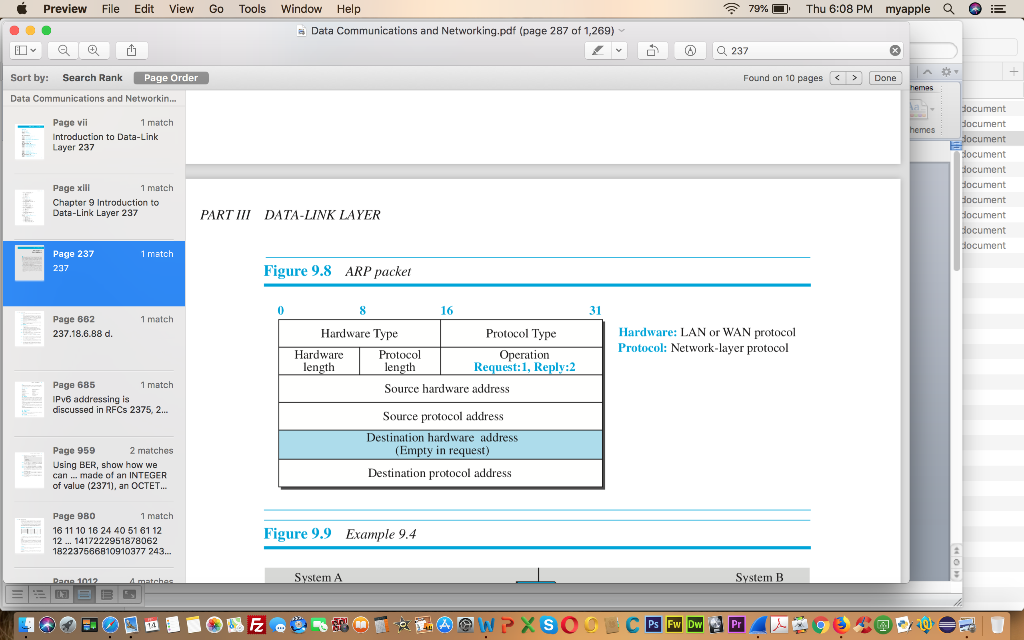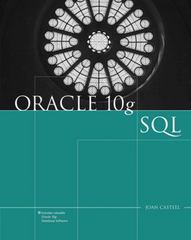Question
Lab Assignments for Chapter 9 We have created one lab assignment for this chapter, Lab9-1. We have also included one lab report sheet, which means
Lab Assignments for Chapter 9
We have created one lab assignment for this chapter, Lab9-1. We have also included one lab report sheet, which means that each lab should be reported on a separate sheet. It is assumed that you have done the lab assignment for Chapter 1, which told you how to install the Wireshark software and how to use it.
The assignment is about an auxiliary protocol, ARP, which is part of the network layer, but it is used as a liaison between the network and the data-link layer.
9.1 ARP
As we discussed in the textbook, ARP is an auxiliary protocol that maps the IP address of the connection to the host or router to the link-layer address of that connection. In this lab, we trace and examine ARP packets
9.1.1 Assignment
Start your web browser and clear the browsers cache memory, but do not access any website yet.
Open the Wireshark and start capturing.
Go to your browser and retrieve any file from a website. Wireshark starts captur- ing packets.
In the filter field of the Wireshark window type arp (lowercase) and click Apply. Stop capturing and save the captured file.
Part I: ARP request message
From the packet list pane, select the first ARP request packet. From the packet detail pane, select the Address Resolution Protocol.
Questions
Using the hexdump and consulting Figure 9.8 in the textbook, answer the following question in your lab-report sheet.
1. From the hexdump, determine
a. the hardware type.
b. the protocol type.
c. the hardware length.
d. the protocol length.
e. the value of the operation field. What is the meaning of this field?
f. the source hardware address.
g. the source protocol address?
h. the destination hardware address.
i. the destination protocol address?
2. Using the packet detail pane, verify your answers to the first question.
3. What is the type of the destination hardware address (unicast, multicast, broad- cast)? Which hardware interface does the destination address define?
4. Checking the packet byte pane, you will notice that the ARP request is followed by zero-bytes. How many 0s are there? Explain the reason for the existence of these 0s.
Part II: ARP reply message
From the packet list pane, select the first ARP reply packet. From the packet detail pane, select the Address Resolution Protocol; the packets hexdump will be highlighted in the packet byte pane.
Questions
Using the hex dump answer the following question in your lab report sheet.
1. Using the hexdump, determine
a. the hardware type.
b. the protocol type.
c. the hardware length.
d. the protocol length.
e. the operation code.
f. the source hardware address.
g. the source protocol address?
h. the destination hardware address.
i. the destination protocol address?
2. Using the packet detail pane, verify your answers to the first question.
3. What Type of address is the destination hardware address? What network interface does the address define?
9.1.2 Lab 1 Report Sheet
9.1.3 Documents to Turn into D2L Dropbox
1. The Lab9 Lab 1 with answered questions in PDF or Word format.
2. Make sure to add a screenshot of the supporting captured ARP information.

Step by Step Solution
There are 3 Steps involved in it
Step: 1

Get Instant Access to Expert-Tailored Solutions
See step-by-step solutions with expert insights and AI powered tools for academic success
Step: 2

Step: 3

Ace Your Homework with AI
Get the answers you need in no time with our AI-driven, step-by-step assistance
Get Started


